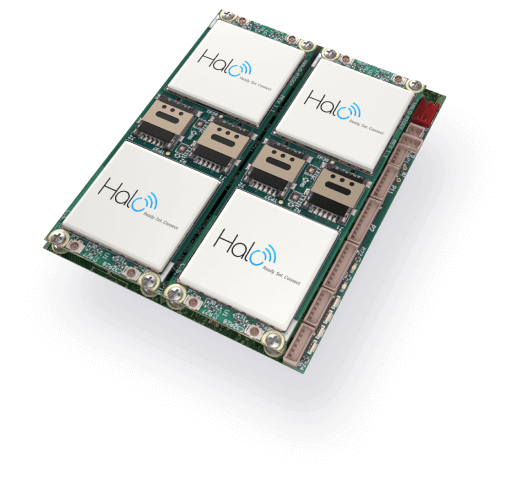- Halo’s unparalleled connectivity enables Beyond the Visual Line Of Sight (BVLOS) drone flights for authorities to safely monitor inaccessible areas remotely from a control centre.
- Drones provide a wider lens of real-time information boosting emergency services’ ability to monitor and control fires, potentially reducing the chance of them becoming large blazes.
- Fitting into the palm of a hand and weighing less than 100 grams, the Halo is easily transportable to areas without infrastructure for quick set-up for emergency situations.
ASX-listed Elsight’s (ASX-ELS) Halo communications solution extends the effectiveness of using drones in firefighting.
One example is Halo’s beyond the visual line-of-sight (BVLOS) capabilities that enable one drone operator while situated in remote headquarters to control many drones concurrently. Commanding personnel can view all the drones’ transmitted video and data from big screens also located in the remote headquarters. In this manner, commander personnel can strategize and plan the correct tactics, while staying safe.
Elsight’s Halo connectivity technology creates a bonded communications link combining four cellular links, which is robust enough to be used in remote and inaccessible areas. If necessary, it also integrates with satellite and radio technologies.
Elsight chief executive officer Yoav Amitai said, “Halo enables beyond the visual line of sight (BVLOS) operation for drones which means that first responders can benefit from extended situational awareness of a disaster such as a fire or flood without putting themselves in harm’s way,’’ Mr Amitai said.
“An effective non-line-of sight drone operation relies on secure, uninterrupted communications for continuous data flow between drones and the command centre,’’ Mr Amitai said.
“By maintaining connection even in the harshest settings, Halo enables improved and faster decision making.”
Drones also have the advantage of being able to fly at night, something that observation planes and helicopters cannot do due to the risk to human life of flying through smoke.
Drones can carry sensors capable of detecting hot spots, poisonous gasses and provide real time visual access to the area which can assist with monitoring the progress of a fire and finding evacuation routes.
The portable version of Elsight’s Halo system weighs less than 100 grams and can fit into a backpack to be transported to remote or rugged locations for rapid deployment. This enables quick set up for drones’ intelligence collection in areas without infrastructure or wireless communications.
The real-world effectiveness of Elsight’s Halo technology has been proven through extensive use in North America, Europe, and the Middle East, however it is yet to be used in emergency services in Australia.
Mr Amitai said the Halo system employs advanced encryption and data-splitting to protect sensitive information from cyber threats, maintaining the integrity of law enforcement communications. Today, drones are taking on an increasing role on the east coast in Australia to monitor floods and fight fires.
They are also expected to play a major role in future search and rescue operations.
Fire and Rescue NSW have been training their staff to use drones in emergencies but other organisations like police and Surf Life Saving are also using drones.
Australian drone operator, Ninox Robotics, this year announced a joint operation with the NSW Rural Fire Service to fly long-range drones for surveillance of bush and grass fires across in the state’s remote west.
Using a drone, capable of more than four hours of flight time and equipped with a real-time dual electro-optical and infrared (thermal) gimballed camera, the team identified heat signatures consistent with bush and grass fires sparked by lightning strikes.
The RFS used this information to identify hot spots and to plan counter measures.
Hopefully, the future holds a place for BVLOS drones that enable a wider safer view for improved tactical firefighting of bushfires.
About Elsight(ASX:ELS)
Elsight’s (www.elsight.com) flagship product, the Halo, uses AI-based multi-link bonding to provide the most robust connectivity for drones and other unmanned systems. By adding cellular communications aggregated with satellite and RF communications, the Halo is 99.99% reliable and cyber secured. With options for less than a 100-gram card or a boxed ground version, the Halo provides continuous connectivity even in the most challenging areas for stationary, portable, or actively mobile situational requirements. Elsight’s products serve many vertical markets leveraging UAV and UAS technologies including the military, HLS, public safety, delivery, medical, oil and gas, utilities, inspections, surveillance and others. Elsight was founded in 2009.
Related
Discover more from sUAS News
Subscribe to get the latest posts sent to your email.


